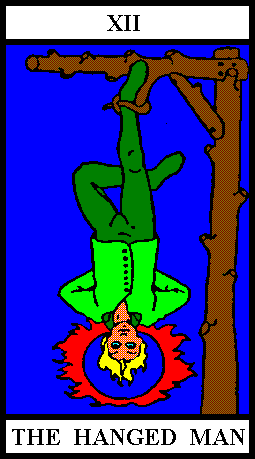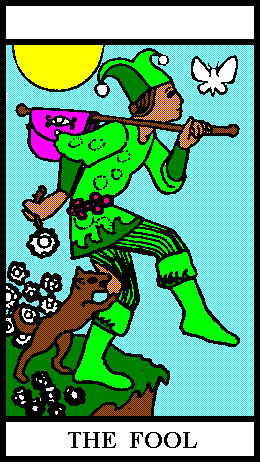 I‘ve been chatting back and forth with Kenny Ausubel, founder of Bioneers, whose amazing essay The Empire Strikes Out I posted last year. The important messages of this essay are: I‘ve been chatting back and forth with Kenny Ausubel, founder of Bioneers, whose amazing essay The Empire Strikes Out I posted last year. The important messages of this essay are:
Kenny wanted to bring to environmental readers’ attention two other essays he’s written:
Our discussion has been about Kenny’s optimism. Although my instincts tell me his optimism is unwarranted, I respect enormously that he’s on the front lines of the battle to save us all from civilization, and I’m just reporting from a distance. I mentioned in an earlier post on the Green Manifesto that historically the most knowledgeable people in society are also its most pessimistic, so I wanted to know how he has remained at once relentlessly informed and relentlessly upbeat. His answer was to refer me to an article from last September’s Harper’s, In Defiance of Gravity, by fiction author Tom Robbins, the guy I keep quoting for his eternal quest for the answer to how to make love last. In that article, Robbins describes his personal experiences with near-suicidal depression, and how he was able to pull himself back from the brink of what he calls Weltschmerz (What a wonderful word! — per dictionary.com it means “Sadness over the evils of the world, especially as an expression of romantic pessimism.”) The trick was to rediscover playfulness, or what the Tibetan Buddhists call Crazy Wisdom. Robbins says it is “the wisdom that evolves when one, while refusing to avert one’s gaze from the sorrows and injustices of the world, insists on joy in spite of everything“. That’s a very generous reading of the Tibetan Buddhists’ approach, which, from my research, seems to be more about teaching by entertaining and distracting the students from linear thought through crazy behaviour. I like Robbins’ literary license of the term better, because to me it makes better intuitive sense. Our Western approach to struggle and adversity is to bear down and ‘work through it’, and that is what we do, all of us who have not stopped paying attention to the mountains of evidence that this culture is truly terrible and the damage it is doing is catastrophic and unnecessary. It is not surprising that Weltschmerz is a German word. Our symbol is the Hanged Man in the Tarot deck, who symbolizes self-sacrifice, and perhaps the seeing of the world as totally turned upside down. I had adopted him as my own, since he showed up in all three Tarot readings I have had in my life. The archetype of the wise Fool is one that is found in many cultures in all parts of the world. His lack of experience in the ways of society is seen on the surface to be a disadvantage, but in reality it ensures that his mind is not closed to unusual experiences that are denied to ordinary men.
He is the vagabond who exists on the fringe or organized life, going his own way, ignoring the rules and taboos with which men seek to contain him. He is the madman who carries within him the seeds of genius, the one who is despised by society yet who is the catalyst which will transform that society. The Fool is the Green Man, the harbinger of a new cycle of existence, the herald of new life and fresh beginnings. He can be seen as the innocent spirit about to embark on physical incarnation; the young child who has yet to learn of the perils of the world; or as the seeker after enlightenment chasing the elusive butterfly of intuition in the hope that it will lead to the mysteries. Like the Court Jester, and Shakespeare’s Hamlet, the madness of the Fool is part deceit, part misinterpretation. As in Tibet, the craziness is a mechanism to reframe and make her underlying knowledge more palatable. But perhaps, too, it is a defence mechanism, a way of coping with too much terrible knowledge. Robbins says the epitome of Crazy Wisdom is the cat. I have seen cats of all ages, cats of amazing wisdom and style who otherwise show themselves to be cunning and astonishingly self-sufficient, chase a piece of string dragged by a child around the house for an hour or more, indefatigably and with enormous concentration, creativity and energy. What is the purpose of this unexpected playfulness? Is this the cat’s way of discharging the tension and anxiety that preoccupies her more sombre and sober moments? Is it her way of teaching the child (or the adult, since I get great pleasure from such games, until usually some intrigued child coaxes the string away from me to learn more about this magic trick) important lessons about instinct, about reflexes, about strategy, about the need for play, and a hundred other lessons we are too besotted with WeltSchmertz to appreciate? Kenny and Tom are on to something here. If we really want to capture the attention of the world and teach them what needs to be done, and soon, to save us from catastrophe, might we be better to act The Fool than The Hanged Man? No, not just act the fool, but be the fool. We might in fact find the costume fits us better anyway. And not only will this amuse our comrades and possibly beguile those that don’t yet understand, it might also make our own lives much less painful, less sorrowful. Is it insane to resolve to behave in a playful and joyful way even when you know, deep inside, the world is horrendously misdirected and filled with unnecessary hardship and anguish? Well, maybe. But they don’t call her The Fool for nothing. |

 But the Tarot deck has another interesting character in it, the Fool or Jester. Here’s what an Australian writer
But the Tarot deck has another interesting character in it, the Fool or Jester. Here’s what an Australian writer 



Well that’s one way of looking at the Fool, more a traditonal A.E. Waite interpretation. I prefer a different one – see http://www.thealders.net/blogs/2004/08/08/2007/
The fool is also Jung’s Trickster. A fascinating archetype. My favorite.”Trickster is a creator, a joker, a truth teller, a story teller, a transformer linked to the spiritual frequency changes humanity is experiencing at this time.”In Native American myth the coyote and the raven are very important tricksters or wise-fools. For some reason, for which I haven’t found a good explanation, women are rarely if ever considered tricksters or fools. From your description of the fool I’d almost put myself in those shoes.
I would say that the Hanged Man is not “self-sacrifice” in the same sense that it is said the Buddha gave his life to feed a starving tiger and her cubs, but it is more like what the Firesign Theatre said in “an unpopular opinion in populous times is always good for a laugh.” The subject of the card is hanging upside-down, clearly captive and ridiculed, but the posture and position of the limbs are traditionally given as being in harmony with a hanging Ankh, the symbol of life. This is the suffering for an ideal, it is the angel-like spirit decended into the base of the material, the unsung martyr bearing the brunt of those who while out of tune with the Ankh, are nonetheless the local majority.I think it’s a pretty good totem card for you :) but the Major Arcana are not so much people as they are journeys, or pathways, and bidirectional pathways. In this case, the Hanged Man is the twelfth pathway, occuring between the roads of Justice and Death, connecting (IIRC) a universe filled with many free-willed (seemingly chaotically counter) egos with the underlying abstracted law of how it all actually works.This may be why the Hanged Man, while undeniably uncomfortable, does not appear to be particularly upset by it.
Cyndy, is the Fool the Trickster, or is Loki/Raven what we Judao/Christians call The Devil? I’d equate the way of the Fool to those people I meet who live their lives on what we call Blind Faith. They blissfully step off into the void grasping the tiger’s reigns … and glory be, much as I might aspire to the way of the Magi, the Fool’s road doesn’t kill them, many in fact prosper! Make you kinda wonder about ‘Faith’, y’know.But the Devil, who in the Tarot I believe connects the individual ego to the Laws of the Ways of the World (the personal counterpart to the Hanged Man?), the Devil says “You can’t do this because … you must do this because … you can do this because …” and all the while we step outside of that perfectly logical argument and take our human-eye view and we say, “No, there’s more to it than that.”When Raven stole Nanabush’s mocassins in the winter camp, he doesn’t instill dispair for long … the human Nanabush takes his larger view of the world and realizes he can roll a hot boulder before him to melt the snow and still reach his destination. This just seems more to me the way we can use our intellect and awareness to transcend the limits thrown before us than it does any leap off the side of a mountain.
Yes, I think the fool is the trickster. They both are teachers and transformers and neither use rationality but rely on the unconscious. They both cause us to not accept things blindly and neither of them say ‘you must do this’. They play with laws and rules and cause us to question and rely on our instincts, which may be the polar opposite of their current crazy ideas at the time, or not, it’s our call to find the balance. I think our intellect is our instinct.
Kenny and Tom are on to something here.